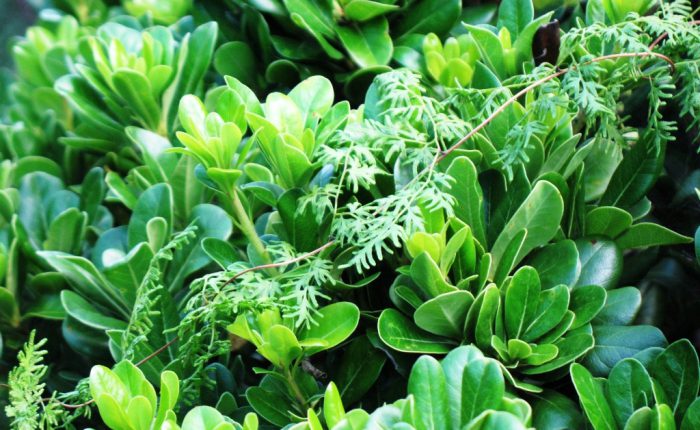
Introduction
At first glance, that lone winding green vine with its feathery leaves may appear harmless in your garden, but as many home gardeners have discovered this invasive plant is quite the opposite. Japanese climbing fern (Lygodium japonicum) is a non-native, invasive vine which since its introduction around 1900 has become established throughout the southeast primarily naturalized in Florida, Georgia, Alabama, Mississippi and Louisiana in counties along the Gulf Coast (USDA Plant Database 2008). It is native to eastern Asia from Japan and west to the Himalayas. Japanese climbing fern is closely related to Old World climbing fern (Lygodium microphyllum), another non-native invasive species in the United States, which is very widespread in south Florida. Both species are listed as Category I noxious weeds by the Florida Exotic Pest Plant Council, with the ability to “alter native plant communities, change community structures and ecosystem function” (Minogue, et al. 2009).
Biology/Ecology
Japanese climbing fern has very long climbing, twining fronds. It may start as an infestation of individual plants, but if left un-managed can quickly become a tangled mass of vines covering ground cover, shrubs, and trees. The above ground vines are supported by a dense root and rhizome mass growing underground. While frost can kill the above-ground portions of Japanese climbing fern it does not necessarily kill the below-ground roots and rhizomes. In addition to spreading by rhizomes, climbing fern also reproduces by spores.
According to Minogue, et al. 2009 “Japanese climbing fern poses both economic and ecological threats to forests in Florida. It is especially problematic in pine plantations managed for pine straw production. For years, pine straw bales have been a suspected vector of viable Japanese climbing fern plant parts and spores.” (Zeller and Leslie 2004). Also, according to Minogue, et al. 2009 “the fern is also problematic during prescribed burning because it provides a fuel ladder to canopy trees. Further, because of its ability to engulf and out-compete native vegetation, Japanese climbing fern can be of particular concern in natural areas…:
Control Options
Because this fern is dispersed over large areas by its tiny spores and re-grows from its underground rhizomes, Japanese climbing fern is difficult to manage. As with any invasive plant species; identification, prevention, and swift management are our first lines of defense. For the home garden, strategies to control Japanese climbing fern are outlined below:

Learn to identify Japanese climbing fern, and look for it every time you are in the garden. If you find it weaving through your landscape plants, take swift action.
Mechanical control:
If you have very little of the vine growing in your garden, and it is not well established, then mechanical control is one option for you. Although hand pulling the twinning vines may seem a quick way to remove these small patches of climbing ferns, the plant will re-grow from below the cut, and will continue to spread by its rhizomes. To increase the success of mechanical control, it is best to remove these patches by digging out, as much as possible, the underground roots and rhizomes. Discard the plant and roots by placing in a plastic trash bag. Do not put them in your compost pile, as they will likely re-grow and spread.
Chemical control:
Research has shown that a 2-3% solution of the herbicide active ingredient called glyphosate (Roundup, and others, etc.) is effective for controlling Japanese climbing fern (http://plants.ifas.ufl.edu/node/639). For the home garden, however, use of this non-selective herbicide needs to be approached very carefully. Since much of the undesirable climbing fern is often found growing within or near your desirable garden vegetation you must be painstakingly careful when using herbicides. Glyphosate is not selective and will kill both the unwanted and wanted plants if not properly applied. Glyphosate is an herbicide that circulates throughout the plant, including the roots. So, the more surface area of the plant that you can spray, the more effective glyphosate will be.
To use herbicides for vine control, first isolate the vines from your desired plants before applying herbicides. One method for the home landscape is to gather the long vines (but not breaking the stems) into an area where you can separate them from the garden plants. Then apply the herbicide to the separated plants. For example if the climbing fern is weaving throughout a hedge that is adjacent to a walkway or driveway, try to pull, without breaking, the vines onto the cement or dirt and spray them with the herbicide. This will help minimize damage to your desirable landscape plants and lawn. If that is not possible then try to separate the vine from the garden plant using some type of barrier such as wood, metal, or plastic. Spray the vine on the barrier and when the herbicide has dried, remove the barrier. Do not spray in windy weather or when rain is expected within six hours. As always, take the time to read the herbicide label, and follow directions. The label is the law!
Summary
Invasive plants know no boundaries. They invade our wild natural areas as well as our backyards. Successful reduction of invasive species depends on coordinated, long term management, and management of invasive species on public and private lands.
References Used for This Article:
Controlling Invasive Exotic Plants in North Florida Forests
Biology and Control of Japanese Climbing Fern (Lygodium japonicum).
UF/IFAS Center for Aquatic and Invasive Plant – Lygodium japonicum
 1
1
